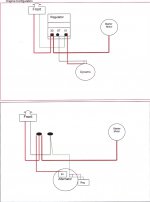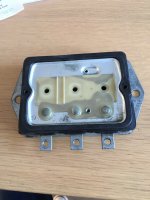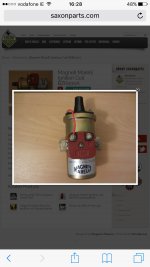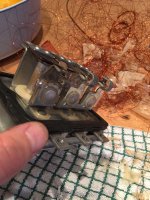Darryl...the voltage regulator/cutout box is just an ornament if you have an alternator. It could be removed but people tend to use it for connecting cables. The internal workings should be inoperative as the alternator's little attachment on the side does what it did with the original dynamo. So those instructions are not relevant to your car.
Can you locate the "continuity" setting on your meter. It is the one where it beeps when you join the red and black ends. We can find thing out safely with that setting.
Can you locate the "continuity" setting on your meter. It is the one where it beeps when you join the red and black ends. We can find thing out safely with that setting.






